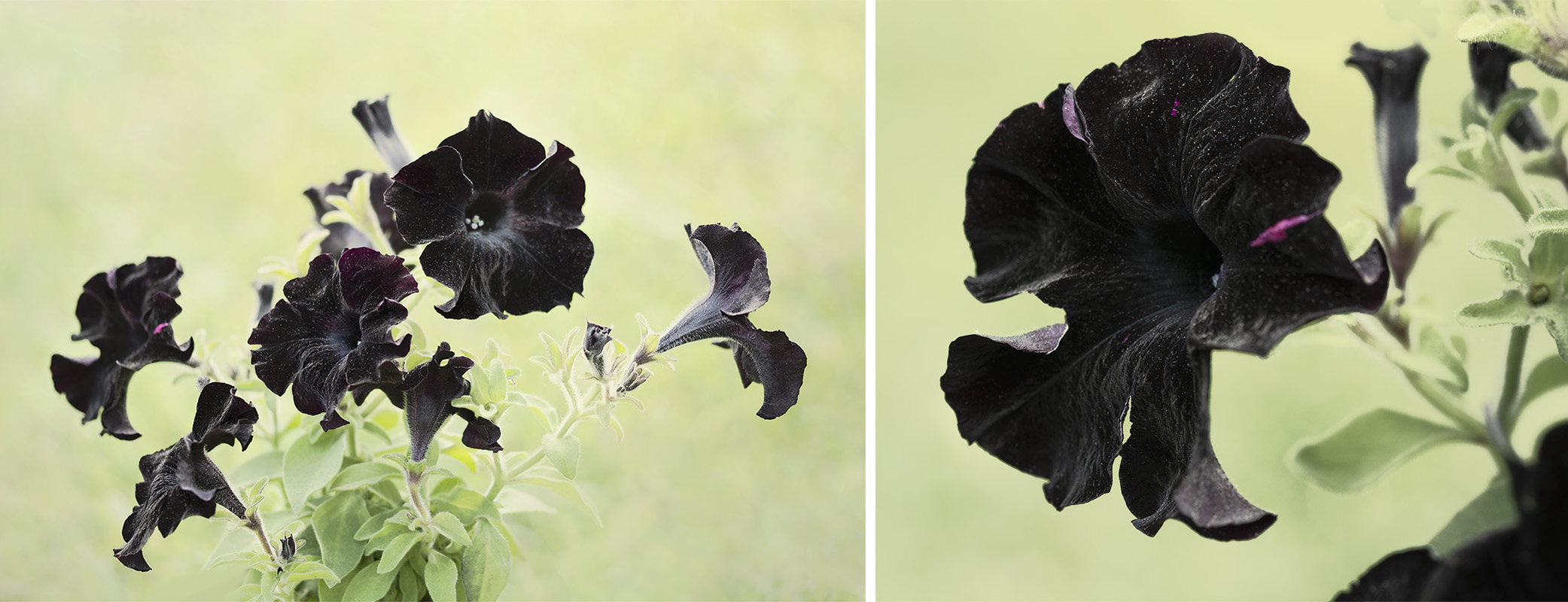Simple Flower Photography Technique

Photographing flowers is fun for me. Sometimes it is also a challenge. Is it the same for you, too?
When we take the time to really look at flowers they are so unique and interesting that, of course, we want to share them. Yet sometimes our efforts don’t live up to the beauty that caught our attention in the first place.
It can be frustrating.
The reality is it often takes more work than it seems to communicate what we saw and felt. Yet here I will share one simple thing to try with your flower photography that can make capturing what you imagine much easier for a variety of important factors.
What is this one simple technique? Simple: Keep your plant in a pot!
This photo session happened before the plant was transplanted. The beauty of having potted plants to photograph is they can be moved to wherever the light and background are best. Usually plants look beautiful when they first come home from the nursery, so that is a great time. You could also consider transplanting them into a bigger pot and be able to move them around all season.
Using potted plants is a huge advantage in creating beautiful flower photos. Potted plants make it easy for you to easily change a few factors that can make or break your photo.
Potted plant advantage: Light
As with any subject, light is very important part of creating interest and communicating your intention for creating the photograph.
Usually I try to show the beauty of flowers. For that reason, bright midday sun isn’t the best choice. It casts strong, hard-edged shadows and overly bright highlights. That is not flattering, so it doesn’t fit my intention. In fact, that type of strong directional light isn’t flattering for most subjects, so some people will say “don’t photograph when the sun is high in the sky.”
For me, if mid-day is the only time I have a some time to shoot – I’m going to find a way to make it happen! I also seem to feel an extra burst of energy and inspiration on bright sunny days, so I’m not going to waste that. There are several ways to modify bright sunlight, but one of my favorites is to just move the subject (and myself) into the shade.
It’s also a huge bonus in the comfort category when it’s hot outside.
Just pick up your little plant friend and head to the shade of a tree, building, awning, etc for instantly more flattering light. As the photographer, you will appreciate the a cooler shaded area, too.
Potted plant advantage: Shooting Angle
Have you ever wished you could get a better angle on your subject, but you just couldn’t quite make it happen? Maybe you don’t want to lay in the dirt or when you get the right angle for the subject the background is ugly. This is again where potted plants shine. You want to photograph them at eye level? Just put them on a table and have a seat with your camera. You can easily give it a little spin to see it from a slightly different vantage point. It can be amazing how much a tiny tweak can make a big difference.
Potted plant advantage: Backgrounds
When your plants are “planted” in the ground you may have to choose between the best angle for the flower and the best background. Not true with a potted plant! Move it to the best light, angle and easily experiment with the background. Other plants at a distance can make an interesting, natural wash of color, a shaded area can make a dark, moody background and the background in full sun with the subject in the shaded area can make a beautiful high key background.
In this petunia case the background is out-of-focus grass. Although I do often photograph flowers on a white background, in this case I wanted the more natural look of a green background. What I discovered was there wasn’t much contrast in the tonal value of the grass and the dark flowers, so they just didn’t stand out the way I had hoped.
In camera I carefully controlled the light, angle, background, exposure and created separation between the flowers and the background with the depth of field using the potted plant advantage, but it wasn’t quite enough.
Photoshop and Adobe Camera Raw are usually part of the process. There will be one more post about this plant detailing my methods in post-processing, but first and most importantly we should consider doing all we can to capture the best photo we can instead of just using a “fix it in Photoshop” mentality. Next up: finishing your photo in Photoshop.
This is a continuation of the story about this Black Mamba Petunia plant. In my last post I talked about this plant being a gift and what happened when I shared my photo to my Facebook page. If you’re interested, you can read it here.
Have you tried photographing potted plants?